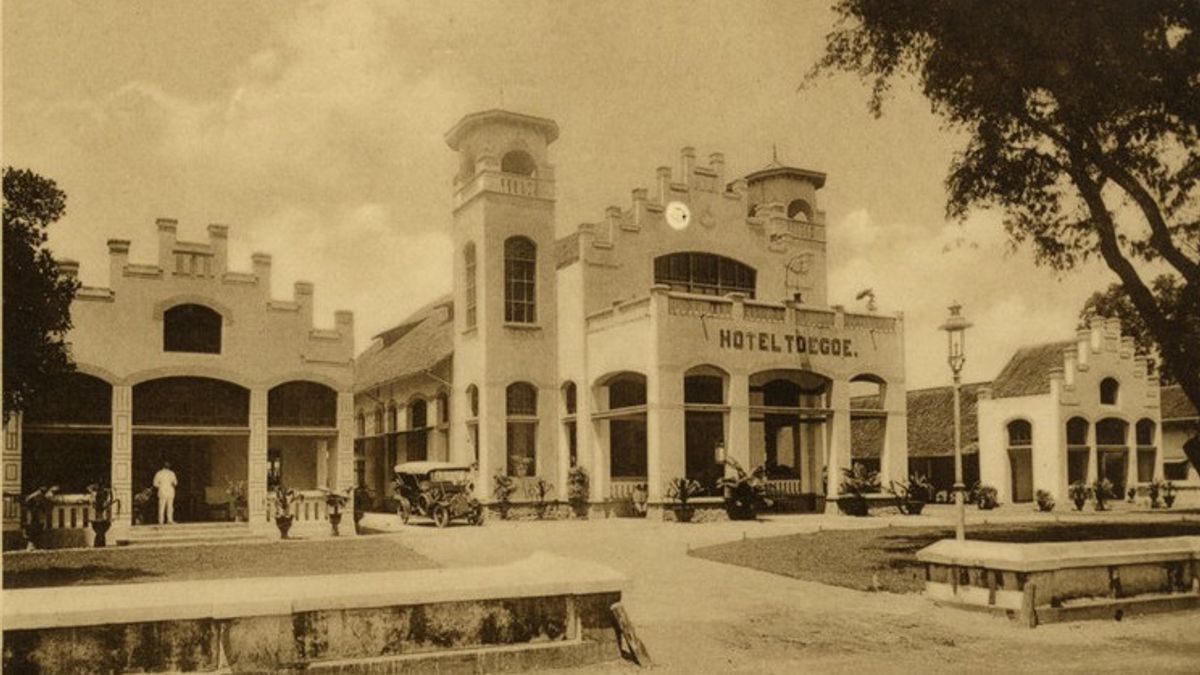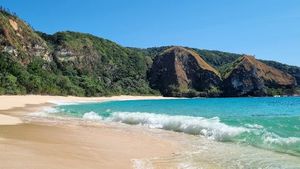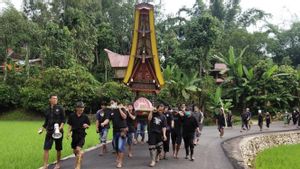JAKARTA - Yogyakarta is a tourist destination. Yogyakarta is also history. A city in Central Java that has extraordinary magical power. Yogyakarta is also home. Tourism wrapped in the romanticism of the past traces modernization and fast-paced life. There is something in Yogyakarta. Since then until now. A great choice for traveling at the end of the year.
Today, Yogyakarta is unstuck in the aftermath of a pandemic on tourism. The number of tourists dropped dramatically. Even so, Yogyakarta does not completely lose its magnetic power. A survey conducted by travel site Pegipegi places Yogyakarta as a popular tourist destination for the end of the year.
Reported by Bisnis.com, Monday, December 14, from 1,490 respondents throughout Indonesia, 75 percent said they are planning a year-end holiday. There are three cities that are predicted to be visited by the most tourists, namely Yogyakarta, Bandung and Bali.
This survey is interesting, showing how strong Yogyakarta's appeal is. The city of Gudeg has a magical power that is like eternal. It's okay, Yogyakarta's popularity as a holiday destination has been maintained since the 18th century. However, there are some differences in the situation.
In the past, those who could vacation in Yogyakarta were only rich and very rich Dutch officials. If there are other class groups, they are foreign travelers.
Since the Dutch colonial era, a visit to Jalan Malioboro to Taman Sari has been a magical point for traveling in Yogyakarta. People call Yogyakarta "the beating heart of Java Island."
Malioboro Street to Taman SariThe presence of Mendut and Borobudur Temples is the main attraction for why people visit Yogyakarta. However, the two temples are only just entrances. Yogyakarta has so many other attractions, from Jalan Malioboro to Taman Sari.
Yogyakarta is so interesting, the name Jalan Malioboro stuck in the memory of foreign travelers at its time. Historian Peter Carey describes the popularity of Malioboro, which sometimes exceeds the name Keraton Yogyakarta.
Malioboro was often used as a ceremonial entry for the governor general. The rest of Malioboro is used as a ceremonial parade such as the annual defile of the Yogyakarta garrison in the celebration of Armed Forces Day on 5 October.
When the parade was taking place, many of the residents and tourists tried to get close to watch the parade up close. The peculiarities and splendor of the parade leave the traveler in awe. Most of them also seemed to watch the parade while taking shelter under tall waringin trees.

Peter Carey does not merely assess admiration for Malioboro as a parade that is often presented. He mentioned that the magical power of Malioboro is even so strong since the origin of its name which comes from the Sanskrit language.
“According to Indian tradition, these royal streets, especially on festive days, are decorated with 'malya' or strands (flowers), among other things. In Sanskrit 'decorated' with garlands is 'mâlyabhara' or 'mâlyabhâra'. And this is the origin of the name Malioboro, "wrote Peter Carey in the book The Origin of the Name Yogyakarta & Malioboro (2015).
Due to the popularity of Malioboro and other tours in Yogyakarta, the tourism agency formed by the Dutch East Indies government, Batavia Vereeniging Toeristenverkeer, believes that the city can bring in foreign tourists. For this reason, the tourist agency with the acronym BVT then listed Yogyakarta as a must-visit tourist destination when visiting Java.
Through his guidebook entitled Java The Wonderland (1900), Yogyakarta has become a popular destination when mentioning Central Java. "Djocjacarta (usually called Djocja; now Yogyakarta and often called Yogya) is a very healthy place, with a temperate climate, clean and beautiful roads, and comfortable gathering places, so it makes a pleasant impression for a traveler," the story of the Java book The Wonderland. .
Not only praising Yogyakarta as a whole. BVT also turns the reader's attention to Vredegug Fortress, Yogyakarta Palace, Alun-alun and most specifically, Taman Sari. Tourists, said BVT, should not miss a visit to a place nicknamed the Water Castle. Because, they will lose all their life.

This water palace is a mainstay of Yogya tourism because it was built directly by the great Sultan Hamengku Buwono I. In full, we have reviewed in the article "Hikayat Taman Sari: A Heaven of Silence and a Fortress in War".
“With half a florin (English coin), a native boy will show you the way through the chaos, full of picturesque places, ancient gates, ponds half filled with vegetation, collapsed halls, small underground passages, and canals, and a tower that was destroyed as high as 17 meters - called the labyrinth, ”told in Java The Wonderland.
That is why the United States traveler, Eliza Ruhamah Scidmore, who visited in the 18th century said that he enjoyed the moment of his visit to Taman Sari. Through the Java book, The Garden of East (1897), he called Taman Sari a paradise garden in the tropics. The tranquility of Taman Sari helps Eliza feel like she has peace of mind.
Eliza described visiting Taman Sari as being in the middle of a secret lake. In which case, the visiting people had to access a secret tunnel to get inside. Moreover, here the kings of Yogyakarta and their wives spent their free time enjoying the serenity and solitude for a while.
“The rest, Taman Sari has one of the most attractive attractions. Namely, when the sun is shining, you can see the romance that seems to survive in the beautiful gardens, caves and galleries. "To the extent that, one can imagine a number of legends and mysteries of the love of the king and his wives in the Water Palace," he added.
Not only Eliza Scidmore. Asian Studies expert, Denys Lombard also said that people who can enter Taman Sari are limited to those who are selected who are superior. The reason is because Taman Sari is not an open space that can be accessed by anyone in the past. Because of this, the location was separated from the outside world, the general world, by a high wall and under heavy guard.
“An enclave, which only superior beings can enter and if they enter there, they will live a more vibrant life as a place to experience the chosen experience. It could be said, in the end, this garden was a heavenly oasis where the king came to live his life as a god, "wrote Denys Lombard in the book Parks in Java (2019).
Because of that, the magical atmosphere of Yogyakarta is still maintained today. Those who come to Yogyakarta are still the elect, they are also superior. Therefore, to bring back memories of a visit to Yogyakarta, a legendary song by Kla Project, entitled Yogyakarta (1991). Here are the lyrics:
Go back to your city
There is a bit of emotion in longing
Still the same as before
Every corner greeted me friendly, full of meanings
Get carried away with nostalgia
When we often make time
Enjoy together
Jogja atmosphere.
The English, Chinese, Japanese, Arabic, and French versions are automatically generated by the AI. So there may still be inaccuracies in translating, please always see Indonesian as our main language. (system supported by DigitalSiber.id)









